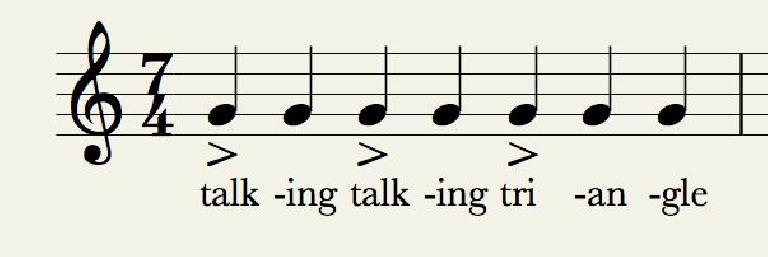あなたが4/4に関係なく、DAWの、拍子のデフォルトを新しいセッションをロードするたびに、音楽組成物に使用される最も一般的な拍子。クイックレビューを必要とする人のために、拍子のトップノートは、拍子の数を意味し、底数は、このように、署名内のすべてのノートの時間値を決定する、1拍を受信音の種類を説明します。
特にEDM品種の大部分の生産は、自然に導かれ
Common Odd Meters
5/4と7/4
間違いなく、5/4と7/4は、最も一般的に使用される変拍子です。四分音符はまだ両方で1拍を受信しますが、それぞれが独特の感触を持っています。どちらも、それがどのビートがメロディックフレーズまたは溝に強調されていることになる場合は特に、厳密には二重の、トリプルで考えるために私たちの自然な傾向に反します。いずれかの拍子で、最初のビートは、二次またはより弱い強調ビートに続いて最も重点を受けます。
5/4で記憶に残る音楽のテーマの一つは、ミッションインポッシブルのテーマです。多くの人々は、ポール・デスモンドを認識
7/4は、すべてのジャンル全体で5/4ほど一般的ではありませんが、ピーター・ガブリエルによる「Solsburyヒル」やピンク・フロイドの主なリフを含むいくつかの顕著な例があります
私は最近、フレーズを使用し、フレームドラムアーティストや教育者とのコラボレーション
また、試すことができます:
- 123 12 12
- 123 1234
ビート重点が上にあります
5/8、7/8、より
5/4と7/4と同様に5/8と7/8の作業、主な違いは、ノートの時間値のシフトです。 5/8の時間では、8 番目のノートでは 1拍、四分音符2拍などを受け取ります。上記で説明し、同じグループが適用されます。これらの時間の署名は、多くの場合、他の化合物メーターと混同されています。例えば、作曲は6/8または9/8の周りの組成を中心かもしれませんが、物事を変更したり、異なるフレーズを終了するために、ここまたはそこに奇妙な措置を投げます。レディオヘッドは、自分の仕事に多くの奇妙な時間と交互に署名を使用しています。 7/8は、部分的に使用されている「パラノイドアンドロイド。」
Compound Meter
化合物または化合物の時間メーターは3等分に分割ビートが含まれています。複合メーターは、多くの場合、最も一般的には3/8、6/8、9/8、12/8いるトリプルメーターと呼ばれている。速いものでながら、管弦楽では、導体は、最初、遅い組成物中の各拍の脈を提供各ビートグループのパルスが強調されています。つまり、高速3/8枚で、導体は、6/8に9/8で3ビートと12月8日のメジャーでの4ビートを尺度ごとに1拍、2拍が表示されます。これはときにテンポの変化パターンを行う混乱させるだろうが理論的には、化合物の時間も、トリプレットとシンプルなメーター(4/4または3/4)のように記述することができます。かかわらず、化合物のメーターは、単純なメートルはちょうどドンそのスイングを持っています
化合物メートルで有名な作品やスタイルは6/8で、多くの場合、多くの文化からバロックダンス、アイルランドの治具やその他の民俗舞踊があります。 「F
Listen, Listen, Listen
これらのリズムがどのように機能するかを理解する最良の方法は、これらの拍子で書かれた有名な組成物に耳を傾けることです。拍手とメロディー、リズムとハーモニーが絡み合うかの感触を得るために沿ってカウントされます。あなたは非常にまだ奇数拍子または化合物メータ組成物に跳躍慣れていない場合、別のリズミカルなアプローチを使用して、クラシックとポピュラー音楽の多くに耳を傾けます。あなたの研究は、現在および将来の仕事のためのインスピレーションとなります。探検行きます!






 © 2024 Ask.Audio
A NonLinear Educating Company
© 2024 Ask.Audio
A NonLinear Educating Company
Discussion
Another way of thinking of compound meters - well, roughly half of them - is to realize that any meter where the "numerator", or beats in the measure is a higher number than the pulse, or "denominator", those meters' pulse can be counted equally with the foot or in the head. So 7/4, as in "Money", you can simply tap out 7 quarter notes and then start over at 1 and continue tapping out equal beats beyond. It's an easy way to approach an often misunderstood part of learning rhythm. Shorter meters like 7/8, 5/8 or 7/16, those take more time to understand and teach, obviously!
Want to join the discussion?
Create an account or login to get started!